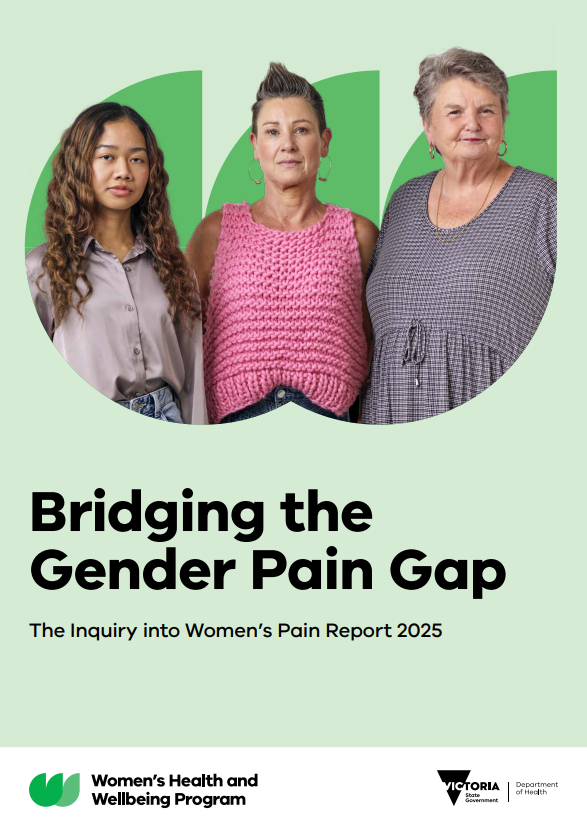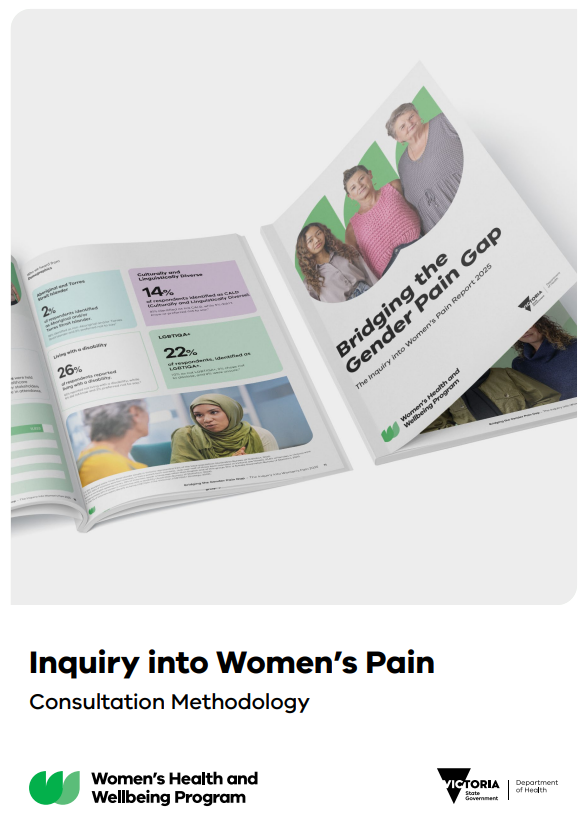
 Bridging the Gender Pain Gap: The Inquiry into Women’s Pain Report 2025
by
The Inquiry into Women’s Pain, the first of its kind in Australia, was conducted between January and October 2024, engaging thousands of Victorian women and girls, carers, clinicians, peak bodies, and researchers. It provided a platform for women and girls with lived experiences of pain to be heard, and informed actionable recommendations for healthcare policy and practice, and improved care models.
Bridging the Gender Pain Gap: The Inquiry into Women’s Pain Report 2025
by
The Inquiry into Women’s Pain, the first of its kind in Australia, was conducted between January and October 2024, engaging thousands of Victorian women and girls, carers, clinicians, peak bodies, and researchers. It provided a platform for women and girls with lived experiences of pain to be heard, and informed actionable recommendations for healthcare policy and practice, and improved care models.
 Inquiry into Women’s Pain: Consultation Methodology
by
This document outlines the methodology applied to the analysis of the data that fed into the Inquiry into Women’s Pain and subsequent ‘Bridging the Gender Pain Gap’ report. It includes details of the types of data collected as part of the Inquiry into Women’s Pain and how those data were collected, analysed, interpreted and reported.
Inquiry into Women’s Pain: Consultation Methodology
by
This document outlines the methodology applied to the analysis of the data that fed into the Inquiry into Women’s Pain and subsequent ‘Bridging the Gender Pain Gap’ report. It includes details of the types of data collected as part of the Inquiry into Women’s Pain and how those data were collected, analysed, interpreted and reported.
Read by QxMD - Most Read
Note: To access full-text, users will need to create a Read by QxMD profile.
 Got big ideas for this ANZCA resource guide? Why not become our advocate? Highlight valuable resources for college fellows and trainees while earning CPD hours!
Got big ideas for this ANZCA resource guide? Why not become our advocate? Highlight valuable resources for college fellows and trainees while earning CPD hours!
 Contact ANZCA Library for more info: library@anzca.edu.au
Contact ANZCA Library for more info: library@anzca.edu.au
Therapeutic guidelines
Better Pain Management program

Professional documents

Strategic plan
Key documents
Quick links
About ANZCA
Copyright © Australian and New Zealand College of Anaesthetists.